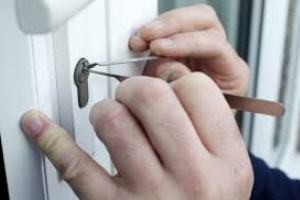Windows are an important part of any building, supplying light, ventilation, and aesthetic appeal. However, they are likewise vulnerable to numerous types of damage, including rot. Window rot, particularly in wood frames, is a common problem that can jeopardize the structural integrity of a window and lead to expensive repairs if left unaddressed. This post digs into the causes of window rot, the actions to determine it, and the methods for repairing it, making sure that property owners and property managers can preserve the performance and look of their windows.
Window rot is a type of decay that impacts wooden window frames, sills, and components. It takes place when wood is exposed to moisture over a prolonged period, resulting in the development of fungi that break down the wood fibers. The process can be steady, however if left uncontrolled, it can cause considerable damage, including warping, breaking, and the eventual collapse of the window structure.
Wetness Exposure: The main cause of window rot is extended exposure to wetness. This can take place due to:
Lack of Maintenance: Regular upkeep, such as painting or staining, helps protect wood from wetness. Disregarding these tasks can speed up the rotting procedure.
Poor Quality Wood: Some types of wood are more resistant to rot than others. Using low-grade or untreated wood can make the window more susceptible to decay.
Suboptimal Installation: Improper installation can leave gaps or cracks where moisture can enter, leading to rot.
Early detection of window rot is essential to prevent more damage. Here are some indications to look for:
Repairing window rot requires an organized approach. Here's a detailed guide:
Assess the Damage
Get Rid Of the Rotten Wood
Apply Wood Hardener
Fill the Area
Sand and Smooth
Prime and Paint
Seal the Window
Prevention is key to preserving the longevity of your windows. Here are some suggestions to prevent window rot:
Regular Maintenance
Correct Drainage
Ventilation
Quality Materials
Q: Can I repair window rot myself, or should I employ a professional?A: Minor window rot can frequently be fixed by a house owner with standard tools and products. However, if the damage is substantial or if you are not positive in your capabilities, it is best to employ a professional. Experts have the experience and equipment to ensure an appropriate repair and avoid more damage.
Q: How frequently should I examine my windows for rot?A: It is advised to examine your windows for signs of rot a minimum of as soon as a year, ideally during the spring or fall. Regular inspections can help capture concerns early, making repairs more manageable and less expensive.
Q: Can I avoid window rot in the very first place?A: While it is impossible to completely get rid of the danger of window rot, you can significantly decrease the probability by following preventive steps such as routine upkeep, correct drainage, and utilizing high-quality, rot-resistant materials.
Q: What should I do if the rot is extreme?A: If the rot is severe, the damaged wooden components may need to be replaced instead of fixed. In such cases, it is a good idea to consult a professional who can evaluate the situation and suggest the very best strategy.
Q: Can I utilize wood filler for deep rot?A: Wood filler appropriates for minor repairs and surface area damage. For deep rot, it is much better to utilize a two-part epoxy, which is stronger and more resilient. Epoxy can also be used to fill bigger spaces and cracks.
Window rot is a typical problem that can trigger significant damage to wooden window frames and sills. By comprehending the causes, recognizing the signs, and following a methodical technique to repair, house owners and home managers can preserve the performance and appearance of their windows. Routine maintenance and preventive measures are important to preventing rot and ensuring the longevity of your windows. Whether you select to deal with the repairs yourself or work with a professional, attending to window rot without delay is vital to secure your investment and the structural integrity of your structure.
By remaining informed and proactive, you can keep your windows in leading condition and take pleasure in the many advantages they provide.

Məlumat tapılmadı!
